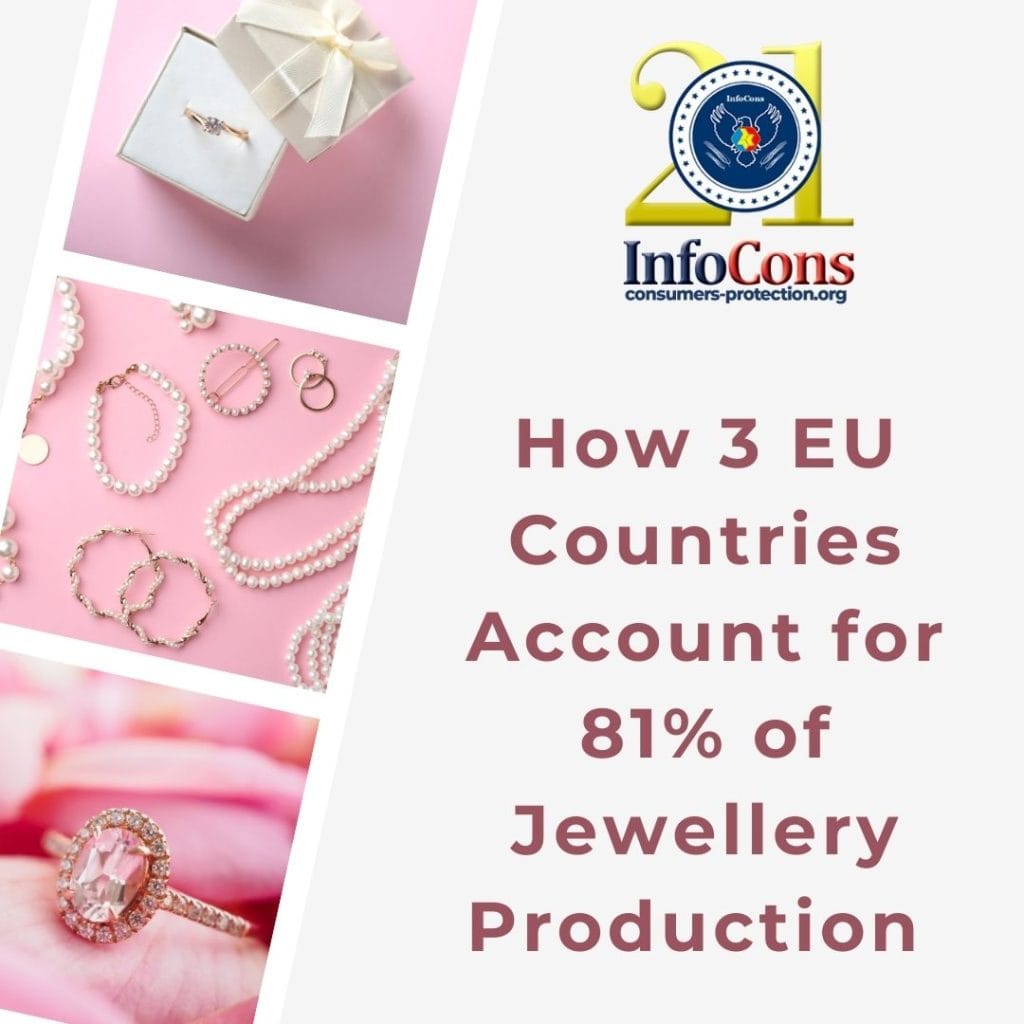
Valentine’s Day is synonymous with love, romance, and gifts that sparkle, such as jewellery. As couples celebrate with tokens of affection, the European Union’s jewellery industry plays a key role in producing the glittering treasures exchanged on this special day. Let’s dive into the fascinating data behind the EU’s jewellery production and explore how this thriving sector continues to shine.
A Year of Growth: EU Jewellery Production in 2023
In 2023, the European Union’s jewellery industry achieved a total production value of €4,363 million. This marked a modest 1% increase from the previous year, where production was valued at €4,321 million. Despite economic fluctuations, the industry demonstrated resilience, contributing significantly to the EU’s economy and cultural heritage.
Leading Nations in Jewellery Production
Among EU member states, Italy emerged as the undisputed leader in jewellery production. With a total value of €1,559 million, Italy accounted for an impressive 36% of the EU’s overall production. Known for its craftsmanship and timeless designs, Italian jewellery continues to be a global benchmark of quality and elegance.
Close behind was France, with a production value of €1,444 million, contributing 33% to the EU total. France’s jewellery industry blends luxury and artistry, making it a key player in the market. Germany secured the third position, producing €507 million worth of jewellery and representing 12% of the EU’s output.
Read also : EU Exports and Imports of Services Reach New Heights , According to Recent Data
Rising Stars and Significant Declines
The year 2023 also saw notable changes in production trends across member states. Croatia recorded the most remarkable growth, with a 26% increase in jewellery production value. Czechia and Ireland followed closely, reporting 25% and 20% growth, respectively. These nations are gradually establishing themselves as emerging hubs of jewellery craftsmanship.
Conversely, some countries faced significant setbacks. Lithuania experienced the sharpest decline, with production falling by 36%, followed by Latvia (-16%) and Italy (-8%). These decreases highlight the varying challenges faced by individual markets within the EU.
The Role of Jewellery on Valentine’s Day
As the jewellery industry supports celebrations like Valentine’s Day, it underscores the cultural and emotional significance of its products. From timeless gold pieces to intricate gemstone designs, jewellery remains a symbol of love and commitment. The sector’s growth and transformation reflect its ability to adapt to consumer preferences and global trends.
Read also : EU Municipal Waste Down 4.3% in Two Years : How Recycling Is Driving Change
Supporting Europe’s Jewellery Industry
For those looking to invest in a meaningful gift this Valentine’s Day, supporting local and EU-based jewellers not only ensures quality but also contributes to sustaining this vibrant industry. Whether it’s Italian gold, French luxury, or German precision, each piece tells a story of craftsmanship and passion.
Source : Eurostat
InfoCons – European Organization for Consumer Protection and Promotion of Programs and Strategies , a full member of the World Organization Consumers International , founding member of the Federation of Consumer Associations , and member of ANEC .